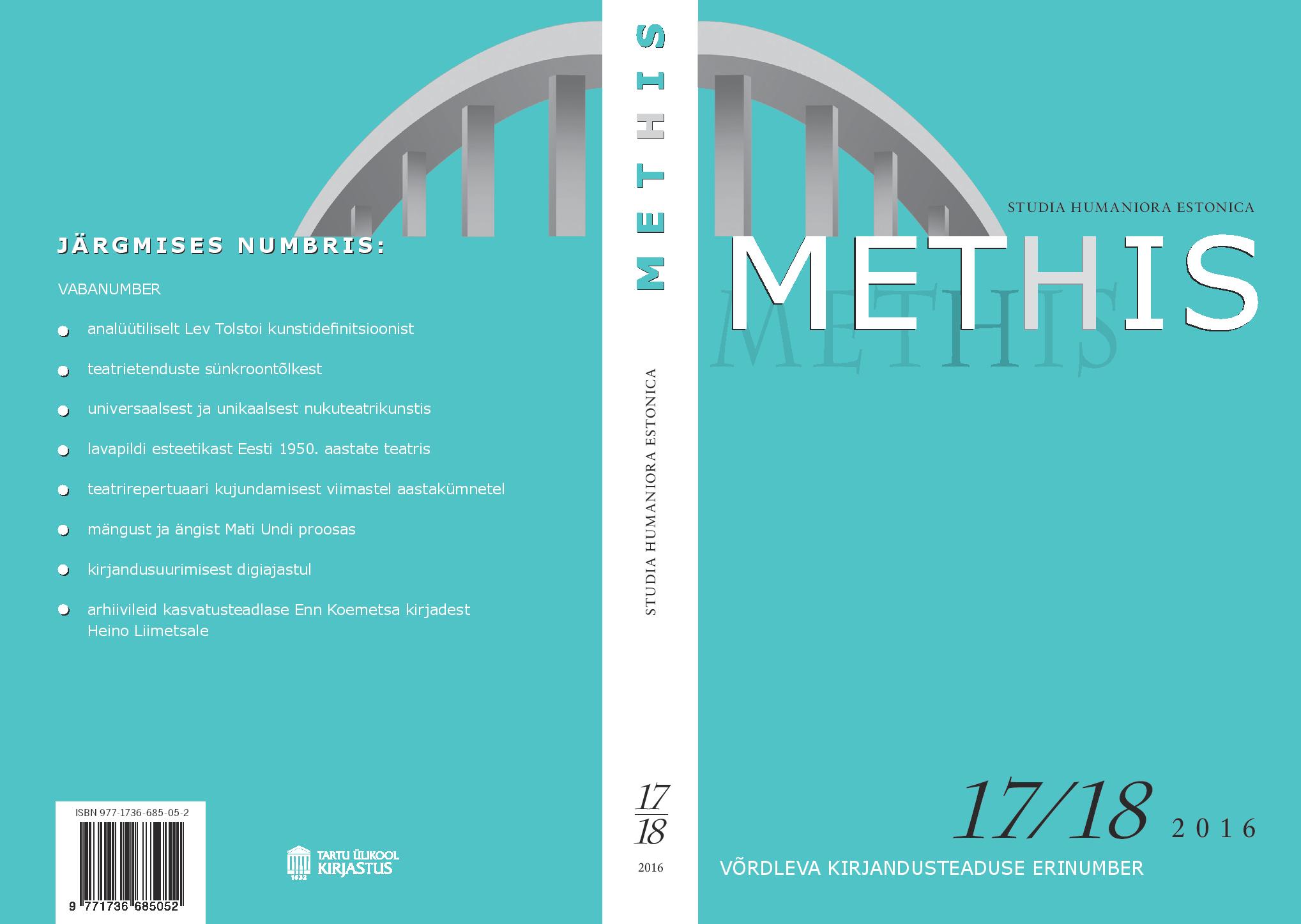Maailmakirjanduse mõõtmisest meil ja mujal / Conceptualizations of World Literature in Estonia and Elsewhere
DOI:
https://doi.org/10.7592/methis.v14i17/18.13208Keywords:
maailmakirjandus, võrdlev kirjandusteadus, tõlkekirjandus, eesti kirjandus, kirjandusõpetus, Tartu ülikool, world literature, comparative literary science, translations, Estonian literature, literature teaching, University of TartuAbstract
Teesid: Artikkel käsitleb maailmakirjanduse mõiste mahu ja sisu muutumist alates selle esilekerkimisest 19. sajandi algupoolel kuni tänapäeva käsitlusviisideni ja dilemmadeni, mille ees seisab võrdlev kirjandusteadus – distsipliin, mis peab maailmakirjandust oma uurimisobjektiks. Juttu tuleb ka väikese kirjanduse spetsiifilisest suhestumisest maailmakirjandusega ning maailmakirjanduse uurimisest ja õpetamisest Tartu ülikoolis alates selle rajamisest 1632 kuni eriala institutsionaliseerumiseni taasiseseisvunud Eestis – maailmakirjanduse õppetoolina.
In the current era of globalization when the borders of national literature have become exceedingly vulnerable, cultural identities more and more hybrid and the term world literature is applied to global translations into English, a comparative literary scholar might ask a question: would it be possible to perceive of a literary world analogously to the world of music? Would it be possible that as Bach does not need to be interpreted within the context of German music or Pärt within the context of Estonian music, works of literature relate to each other within the global field of literature and are no longer related to their linguistic and cultural contexts? In order to come to a „bigger picture“, to achieve a more extensive level of generalization, might it be possible to give up the linguistic, historical and cultural contextualization of works of literature? What would a small literature win or lose in such situation? In the present article the concept of world literature and its’ historical conditions – as an object of comparative literary studies – will be explained using the example of Estonian literature. In order to do so, an overview of the history of comparative literary studies at the University of Tartu will be provided. At the University of Tartu, the study of comparative literature was initiated much earlier than systematic study of Estonian literature or its’ appearance on the horizon of world literature. Thereby the ’home’ (or ’homelessness’) of the history of comparative literature history and its re-positionings in different time periods will be analyzed. Having roots in the studies of rhetoric and poetics in the Academia Gustaviana founded in 1632, comparative literary history in the German-language Kayserliche Universität zu Dorpat (re-established in 1802) was initially a topic for professors of classical philology, while shortly after moving under the lectureship of German language and then, during the period of Russification, to the department of Russian language and literature. Beginning in 1904, comparative literature was affiliated with the chairs of Latvian and Estonian, where it developed as a modern disciple in the Estonian-language University of Tartu at the time of Professor Gustav Suits in the 1920s. The Soviet period formally maintained the position of world literature in relation to the Estonian literary canon under the label of ’foreign literature’, but the notion of foreign literature narrowed, being limited to those works of the established literary canon of the West that were considered ’progressive’ by the Marxist ideology. ’Foreign literature’, in particular its relationship with Estonian literature was under ideological pressure to the extent that it was more rational to deal with it as a closed phenomenon boiling in its own juices. At the same time Russian literature was pushed to the fore. Its influence and role in the development of Estonian literature had to be emphasized. However, it was precisely Russian philology where Tartu literary studies was given an impulse that gave an impetus to several disciples in Tartu as well as elsewhere, while also creating a completely new field – semiotics. The theory of periphery as an area, where semiotic processes accelerate and the creative and dialogical function of borders developed in Tartu by Juri Lotman, explains a great deal about the history of Comparative Literature in Tartu: the peripheral location of Tartu, its changing identity turns out to be the crossroad and meeting point of diverse cultures. This has facilitated comparative approach to cultures and view comparison as the only possible methodology of literary studies. At the periphery the perception of borders sharpens, and this exactly is the field of Comparative Literature.


